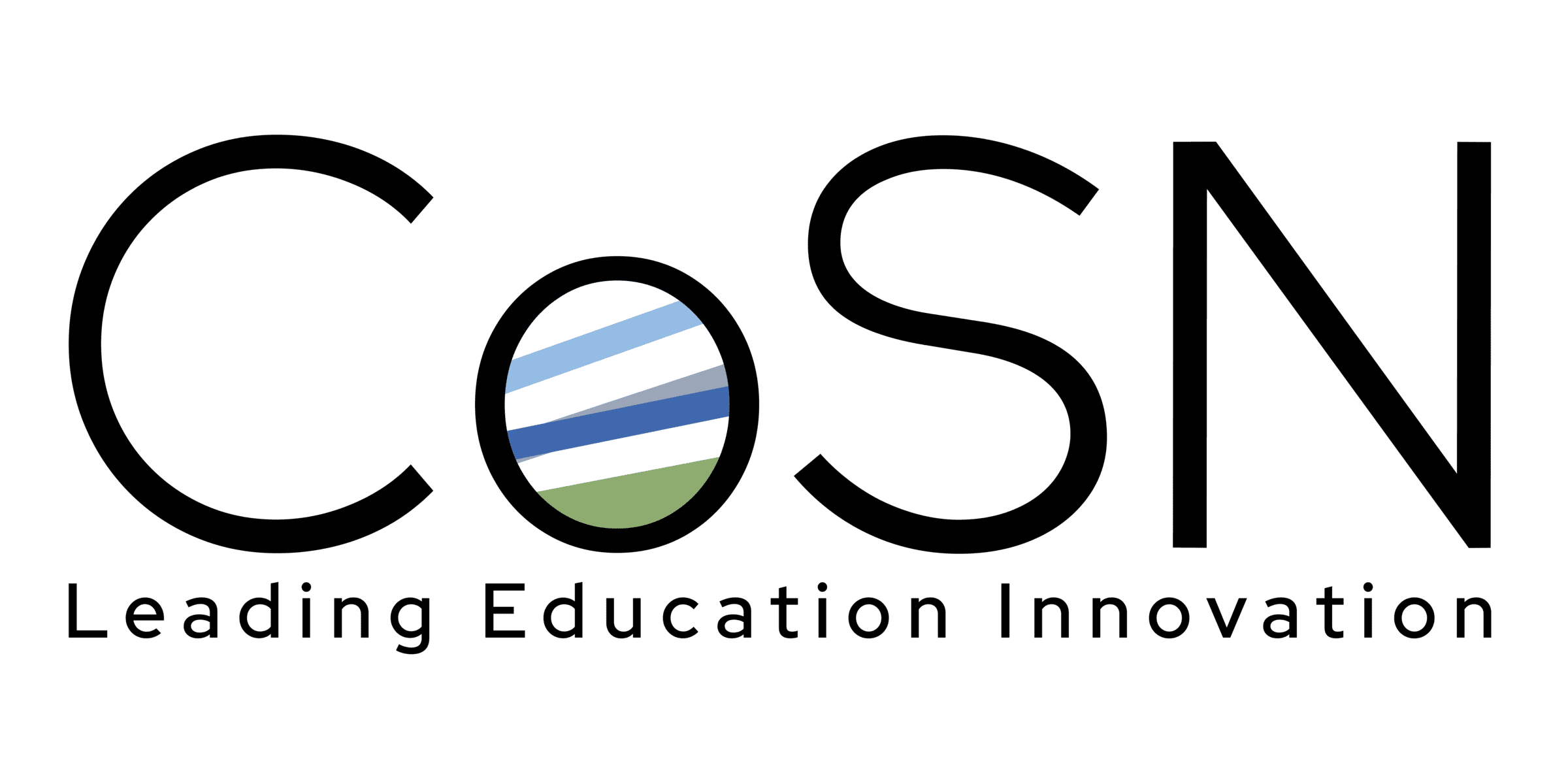Technology leaders in K-12 schools know that innovation isn’t about chasing the “next big thing.” Instead, it’s about anticipating how emerging tools will impact classrooms, student experiences, and long-term readiness.
That’s why committees like CoSN’s EdTech Innovation Committee are so valuable: they bring together EdTech leaders to exchange candid perspectives on what’s working, what’s stalling, and what’s coming next. As Committee Co-chair David Jarboe (D2 Harrison Schools, Colorado) said, “We heavily rely on our committee so that what we’re doing will inform our [CoSN] members in a meaningful way.”
Those voices recently surfaced an important truth: while technology in schools may look stable on the surface, the next few years will bring a wave of change in how we integrate, secure, and humanize our digital ecosystems.
Below are some of the key trends and questions that surfaced during our August committee meeting, insights that reveal both where technology is headed and how our collective vision for learning is evolving. These are just some of the topics that the EdTech Innovation Committee will explore in the coming year.
From Hardware Saturation to Smarter Integration
Are we reaching a plateau in classroom technology hardware? With interactive flat panels, 1:1 devices, and robust Wi-Fi now the norm in many districts, perhaps the question is no longer “What hardware do we need?” but “How can we use what we have in new ways?”
The conversation quickly shifted to how hardware is being reimagined. Examples highlighted included AI-enabled wearables, robotics used for social development, and translation devices that expand access. “The hardware is starting to slow in growth, but we’re starting to see expansion in the depth that the hardware is utilized,” said Committee Co-Chair Ryan Cox (District 279 Osseo Area Schools, Minnesota).
Hardware is no longer just a tool; it’s becoming an equity issue, ensuring all students have the same baseline access, while also an innovation space where familiar devices are used in new ways.

Artificial intelligence dominated the discussion, not just as a buzzword but as a transformative force transforming classrooms and operations alike.
Districts are moving from curiosity to concrete planning: drafting guidelines, building instruction around AI literacy, and experimenting with applications in both teaching and operations. Leaders also shared how AI is being embedded into cybersecurity networks, how generative AI can accelerate design for 3D printing, and how AI-driven robots are helping students with autism practice social interaction.
Cybersecurity as Student Safety
Cybersecurity has become a non-negotiable foundation of school technology strategy. Leaders pointed out that safeguarding against phishing and breaches is now as much about protecting students as it is about protecting networks. This perspective reframes cybersecurity from a purely technical challenge to a student safety imperative.
Pathways to the Future Workforce
Career readiness isn’t a new goal, but the technologies involved are rapidly shifting. Districts are embedding robotics, video production, and even quantum computing into learning pathways. Partnerships with industry are becoming essential to ensure students graduate not just with devices in hand, but with relevant, adaptable skills. Several noted that strategic plans often look the same on paper, which raises a pressing question: are we evolving our goals at the pace of technological change?
Accessibility and Inclusion
Digital accessibility compliance is no longer optional. Districts are investing in tools, resources, and training to ensure that all students can fully engage with digital content. Kristina Brown (Poudre School District R-1, Colorado) and her group discussed examples of digital accessibility, including adaptive robotics for students with autism, real-time translation tools, and the importance of design practices that meet accessibility standards.
Reimagining the Familiar
One of the most compelling insights was that many of the “emerging” technologies aren’t new at all — they’re familiar tools used in new contexts. A faster 3D printer combined with generative AI becomes a radically different creative tool. Robotics, once confined to competitions, are now helping students gain confidence in public speaking. Even video production has shifted from high-end equipment to the everyday device in a student’s pocket.
As committee member Ruben Puentedura (Hippasus, Massachusetts) put it, “The context for the tech has changed in such a way that it might as well be a new tool.”
Looking Further Ahead
The conversation repeatedly returned to a bigger question: What does the future of education look like? Many leaders believe we’re at an inflection point, where hardware, software, pedagogy, and policy must evolve together. The challenge isn’t predicting which device or platform will dominate, but ensuring we have the vision and flexibility to adapt.
As committee member Andy Fekete (Community Consolidated School District #93, Illinois) reflected, “There’s value in us having real, authentic conversation about where we’re headed in education. There are some interesting threads to pull on as we consider where we’re going as we talk about education in a big-picture sense. I don’t know if I have the answer to that, but I think it’s a good thought-provoking question.”
CoSN’s EdTech Innovation Committee meets virtually every month to develop resources on CoSN’s Driving K-12 Innovation Top Topics, and other timely trends that have the potential to significantly impact K-12 education.
AUTHOR: Stephanie King, Writer and Communications Manager,
CoSN’s EdTech Innovations Committee and Driving K-12 Innovation
Published on September 30, 2025
CoSN is vendor neutral and does not endorse products or services. Any mention of a specific solution is for contextual purposes.

